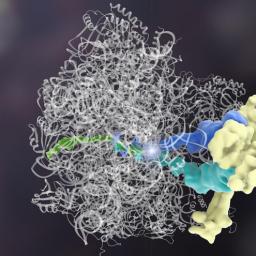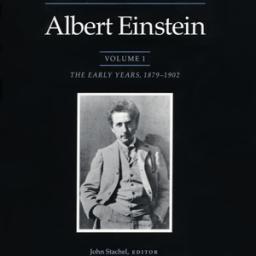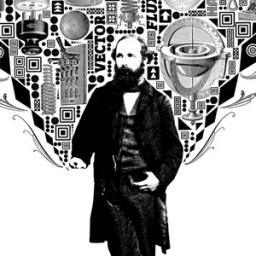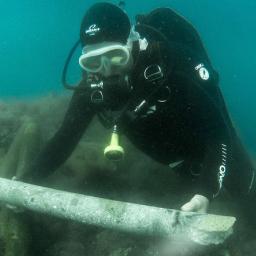
A Tongan volcano has
created a substantial new island since it began erupting last month, spewing out huge volumes of rock and dense ash that has killed nearby vegetation. Tonga is almost 2,000 kilometers (1,243 miles) northeast of New Zealand. It lies on the so-called Pacific "Ring of Fire", where continental plates collide causing frequent volcanic and seismic activity.
The new island is more than one kilometer (0.6 mile) wide, two kilometers (1.2 miles) long and about 100 meters (328 feet) high. During observations the volcano was erupting about every five minutes to a height of about 400 meters (1,312 feet), accompanied by some large rocks...
The volcano rumbled to life on December 20 for the first time in five years, erupting from two vents, one on the uninhabited island of Hunga Ha'apai and the other underwater about 100 meters (328 feet) offshore. A number of international flights were cancelled earlier this week amid concerns about the volcano's ash plume but they resumed on Wednesday, with authorities saying debris from the eruption was not being thrown high into the atmosphere.
Cone snails are notorious for stinging scuba divers tempted to pick up their beautiful shells. But the geographic cone snail (Conus geographus)-the most venomous cone snail of all, with several human deaths under its belt-takes its practice of poisoning to a whole new level. The tropical sluggard kills by overdosing fish with
a toxic cloud containing insulin. Plummeting blood sugar levels throw the victims into a stupor.
Once the fish are in a sugar coma, the cone snail reaches out with what's called a false mouth-it looks like it's throwing a cape over its prey-and drags a stupefied animal into its mouth. The snail then stings the fish with another set of toxins, just to make sure its victim is completely paralyzed. Other compounds in cone snail venom produce similar results, but no other animal that researchers know of-except perhaps people-uses insulin to kill like this.

The most important job inside any cell is making proteins, and they are all made using instructions from DNA. This process is practically gospel in the field of molecular biology, but new research identifies some exceptions. Some proteins, it turns out,
can make other proteins.
This isn't a case of a protein going rogue. It seems to be part of the recycling process that occurs when there's a mistake in a protein being built. When an error is introduced, the ribosomes stall and call in a group of quality control proteins, including Rqc2. In observing this process, the researchers saw how Rqc2 links up with the transfer RNA and tells it to insert a random sequence of two amino acids into the chain (out of 20 total amino acids).
The researchers believe that Rqc2's seemingly aberrant behavior might be an integral part of keeping your body free of faulty proteins. It's possible that it is flagging the protein for destruction, or that the string of amino acids could be a test to see if the ribosome is working properly. People with disorders like Alzheimers and Huntingtons diseases have defective quality control processes for their proteins. Understanding the exact conditions where Rqc2 is triggered, and where it fails to trigger, are the next step in this research, and could be important for developing new treatments for neurodegenerative diseases.
New research has revealed that ancient Europeans adapted the ability to digest dairy much later than expected. It's long been known that after humans transitioned from hunter gatherers to farmers, many populations also evolved the ability to tolerate lactose, a sugar found in dairy. But new DNA evidence now shows that this ability evolved much later in certain populations - and for 4,000 years ancient Europeans were eating cheese,
despite not being able to stomach it.Scientists had estimated that lactose tolerance must have evolved around 7,000 years ago or more, when cheese-making first started. But the researchers found that the genes didn't actually appear until 3,000 years ago. The next step is to map the distribution of the lactose-tolerant gene further, and find out more about how our genetics changed in response to our diet.
This seems to show that human evolution doesn't happen as quickly as expected, and lends some credence to the saying: Starving people have no food allergies.

New research demonstrates that an increase in greenhouse gas concentrations thousands of years ago was a key factor in causing substantially more rainfall in two major regions of Africa. It was the most recent time during which natural global warming was associated with increases in greenhouse gas concentrations. Following a long dry spell during the glacial maximum, the amount of rainfall in Africa abruptly increased, starting around 14,700 years ago and continuing until around 5,000 years ago. So intense was the cumulative rainfall, turning desert into grasslands and savannas, that scientists named the span
the African Humid Period (AHP).Previous studies had suggested that the AHP was triggered by a ~20,000-year cyclic wobble in Earth's orbit that resulted in increased summertime heating north of the equator. That summertime heating would have warmed the land in such a way as to strengthen the monsoon winds from the ocean and enhance rainfall. Instead, the study revealed the role of two other factors: a change in Atlantic Ocean circulation that rapidly boosted rainfall in the region, and a rise in greenhouse gas concentrations that helped enhance rainfall across a wide swath of Africa.
While the industrialized world looks to reduce greenhouse gas emissions to preserve our current climate, Africa could find itself benefiting from increased emissions.

Last week, the Princeton University Press published the
Digital Einstein Papers, electronic versions of an enormous number of Albert Einstein's written works, including published papers, popular writings, and even personal correspondence with scientists and family.
The site presents all 13 volumes published to date by the editors of the Einstein Papers Project, covering the writings and correspondence of Albert Einstein (1879-1955) from his youth to 1923.
The volumes are presented in the original language version with in-depth English language annotation and other scholarly apparatus. In addition, the reader can toggle to an English language translation of most documents.
This is an incredible collection. An enormous amount of work has been put in by both projects to collect and translate the works. If you find any documents of particular interest, post a link in the comments!

If you enjoy reading about the history of science, this is a great story: the history of geologist Marie Thorp, whose methodical plotting and cataloging of mid-ocean SONAR data
led to the discovery and mapping of the mountainous ridges that bisect the world's oceans. That discovery in turn helped validate the geologic theory of continental drift, which until then had been dismissed by even serious, erudite scientists as a bit of poetry and imagination.
In late 1952, as Tharp was replotting the ocean floor, Heezen took on another deep-sea project searching for safe places to plant transatlantic cables. He was creating his own map, which plotted earthquake epicenters in the ocean floor. As his calculations accumulated, he noticed something strange: Most quakes occurred in a nearly continuous line that sliced down the center of the Atlantic. Meanwhile, Tharp had finished her second map-a physiographic diagram giving the ocean floor a 3-D appearance-and sure enough, it showed the rift again. When Heezen and Tharp laid their two maps on top of each other on a light table, both were stunned by how neatly the maps fit.
An interesting read that's surprisingly heart-warming: amazing to see how facts become knowledge and knowledge leads to understanding.

IEEE Spectrum has an interesting and detailed article about
the long road to Maxwell's equations. It's
not a text full of lengthy demonstrations and mathematical jargon (don't worry there are still some formulas), if anything it's a story of physics and mathematics spread across the nineteenth century.
It explains how, from observations made by
Faraday and others,
Maxwell deduced a set of
20 complex equations describing the electrical and magnetic fields. These equations almost fell into oblivion because of both their complexity and the lack of experimental evidences for the brand new concepts introduced (e.g. electromagnetic waves can propagate without a medium, light is just one of them, etc.). They were only saved thanks to a few passionate scientists,
the Maxwellians, notably
Heaviside who managed to simplify and sum them up into the well-known 4 equations that we all read once in some introductory engineering or physics textbook.
lifescience reports that a plant based compound triggers the conversion of white fat into brown fat. The difference between white and brown fat is, that while white fat stores energy, brown fat is used to generate heat to keep the body warm. Consequently mice, when treated with this compound, generated more heat when they were exposed to cold air and therefore burned more calories.
Author Comment: I am skeptical. Articles, which claim some breakthrough regarding obesity, are available a dime a dozen. Usually directly or indirectly some magical compound is mentioned, which if marketed helps for sure... the account of the maker of this compound. Before I'd trust in pharmaceutical solution, I'd like to see an explanation for an effect, which is described here:
http://www.nature.com/news/2010/101124/full/news.2010.628.html Not only humans are getting fatter and fatter, but lab animals are too, despite a very controlled dietary plan which often does not change for years.
 A Tongan volcano has created a substantial new island since it began erupting last month, spewing out huge volumes of rock and dense ash that has killed nearby vegetation. Tonga is almost 2,000 kilometers (1,243 miles) northeast of New Zealand. It lies on the so-called Pacific "Ring of Fire", where continental plates collide causing frequent volcanic and seismic activity.
A Tongan volcano has created a substantial new island since it began erupting last month, spewing out huge volumes of rock and dense ash that has killed nearby vegetation. Tonga is almost 2,000 kilometers (1,243 miles) northeast of New Zealand. It lies on the so-called Pacific "Ring of Fire", where continental plates collide causing frequent volcanic and seismic activity.




